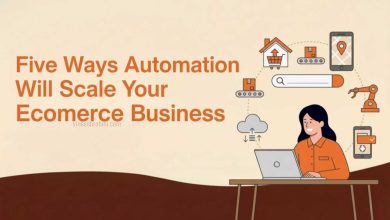How to Sell Online Without Inventory : Comprehensive Guide 2025
How to Sell Online Without Inventory : Selling online without inventory is one of the most practical and profitable ways to enter the digital marketplace in 2025. Traditionally, starting an online business required large investments in stock, warehousing, and logistics. Today, with the rise of technology, supplier networks, automation tools, and consumer demand for personalized products, entrepreneurs can build thriving businesses without ever handling a single physical item. This approach has reduced risk, minimized startup costs, and opened doors for creators, students, and professionals who want to achieve financial freedom.
Table of Contents
In this guide, we will explore every possible way to sell online without inventory, covering models like dropshipping, print on demand, digital products, affiliate marketing, and drop servicing. We will also explain step-by-step how to set up your business, market it effectively, handle operations, scale to higher profits, and avoid common mistakes.
Why Selling Without Inventory is a Smart Choice in 2025

Inventory-based businesses carry heavy risks. Stocking goods requires upfront investment, storage, insurance, and the risk of unsold products. Shipping delays, supply chain disruptions, and overstocking problems add to the challenge. Selling without inventory removes these barriers, allowing entrepreneurs to launch faster and with less capital. Another benefit is flexibility. Since you don’t lock yourself into fixed stock, you can test different products, niches, and services quickly to see what resonates with your audience.
Also Read : 10 Low-Cost Online Business Ideas for 2025 – Launch Your Digital Venture with Minimal Investment
Models like dropshipping and print on demand are expanding rapidly, while digital products and affiliate marketing continue to dominate the passive income space. With increasing global adoption of ecommerce and consumer comfort with online purchases, the opportunity to start a no-inventory business is bigger than ever in 2025.
Business Models That Let You Sell Online Without Inventory
There are several proven models to run an online business without keeping stock. Each has its strengths, challenges, and ideal audience.
1) Dropshipping
Dropshipping is the most recognized no-inventory business model. You create an online store, add products from suppliers, and when a customer orders, the supplier fulfills it directly. You never see or touch the product.
Advantages:
- Extremely low startup cost.
- Wide variety of products to sell.
- Quick setup with platforms like Shopify or WooCommerce.
Disadvantages:
- Lower profit margins.
- Little control over shipping times.
- Quality issues may harm your reputation if suppliers are unreliable.
Best for: Entrepreneurs who want to launch fast and test multiple product categories.
2) Print on Demand (POD)
Print on demand allows you to sell custom-designed products such as T-shirts, mugs, hoodies, posters, and phone cases. Each item is printed and shipped only when ordered.
Advantages:
- No inventory risk.
- Perfect for creators and brands looking for unique designs.
- Easy integration with ecommerce platforms.
Disadvantages:
- Smaller margins on commodity products.
- Reliant on print quality and supplier reliability.
Best for: Designers, influencers, artists, and entrepreneurs who want a personalized brand with creative freedom.
3) Digital Products
Digital products include e-books, templates, courses, stock photos, software, and music. Once created, these products can be sold infinitely without additional costs.
Advantages:
- Highest profit margins.
- Instant global delivery.
- Zero logistics management.
Disadvantages:
- Requires upfront effort to create.
- Marketing is essential to stand out.
Best for: Experts, teachers, creators, and professionals looking for passive income streams.
4) Affiliate Marketing
In affiliate marketing, you promote other people’s products or services and earn a commission for each sale.
Advantages:
- No product creation.
- No inventory or fulfillment.
- Works well with blogs, YT, and social media.
Disadvantages:
- Commissions vary and can be reduced.
- Requires traffic-building skills.
Best for: Bloggers, influencers, and content creators with niche authority.
5) Drop Servicing
Drop servicing is similar to dropshipping but for services. You sell a service like website design, copywriting, or video editing, then outsource delivery to freelancers.
Advantages:
- High profit margins.
- No product handling.
- Scalable by building teams.
Disadvantages:
- Quality control depends on freelancers.
- Requires strong communication and project management.
Best for: Entrepreneurs who are good at sales and client management.
6) Online Marketplaces and Merch Platforms
Platforms like Amazon Merch on Demand, Kindle Direct Publishing, and Etsy digital stores allow you to upload designs or digital files and sell without holding stock.
Advantages:
- Huge built-in audiences.
- Easy to start.
- Automated fulfillment systems.
Disadvantages:
- High competition.
- Dependence on platform rules and algorithms.
Best for: Beginners and creators looking to test markets quickly.
How to Choose the Right No-Inventory Model
Your choice depends on your strengths, goals, and resources. If you have creative skills, print on demand or digital products are perfect. If you have traffic or followers, affiliate marketing is easier to monetize. For entrepreneurs comfortable with customer service and product testing, dropshipping is ideal. If you excel in managing freelancers, drop servicing is highly profitable.
When selecting your niche, consider:
- Demand and search volume for products or services.
- Competition and differentiation opportunities.
- Potential for repeat customers or subscriptions.
- Long-term sustainability and scalability.
Step-by-Step Guide to Selling Online Without Inventory

Step 1: Validate Your Business Idea
Before investing too much time, test your idea. Create mockups, run small ad campaigns, or use social media polls to gauge interest. Pre-sell if possible to confirm demand.
Step 2: Build Your Platform
Depending on your model, build an ecommerce store using Shopify, WooCommerce, or BigCommerce. For digital products or courses, platforms like Gumroad or Teachable are excellent. If you’re doing affiliate marketing, focus on a blog, YT channel, or social presence.
Step 3: Choose Tools and Suppliers
For dropshipping, pick reliable suppliers with good shipping policies. For POD, choose companies like Printful or Printify. For digital products, use secure hosting and delivery systems. For drop servicing, build relationships with trustworthy freelancers.
Step 4: Create Your Listings or Content
Optimize product pages with SEO keywords such as best POD products 2025, dropshipping store setup, and how to sell online without inventory. Use compelling descriptions, professional images, and trust signals.
Step 5: Set Up Payments and Policies
Integrate payment gateways like Stripe, PayPal, or local solutions. Draft clear return, refund, and shipping policies. Transparency builds trust.
Step 6: Launch and Market
Start small, gather data, then scale. Marketing should focus on SEO, social media, influencer partnerships, email marketing, and paid ads. Highlight unique selling points and emphasize customer benefits.
Marketing Strategies That Work in 2025
- SEO Optimization: Create long-form content targeting buyer-intent keywords.
- Video Marketing: Use YT Shorts and Insta Reels for product demonstrations and testimonials.
- Social Media Communities: Build trust by engaging in FB groups, Reddit communities, and Discord servers.
- Email Marketing: Build a list from day one. Use automated sequences for nurturing leads and upselling.
- Paid Ads: Use Fb Ads and G Ads Ads strategically. Focus on creative testing and retargeting campaigns.
- Influencer Partnerships: Micro-influencers often provide better ROI than large accounts.
Operations and Customer Experience
While you don’t manage inventory, operations remain crucial. Customer service can make or break your business. Always communicate clearly, provide tracking updates, and resolve complaints quickly. Test suppliers with sample orders to ensure product quality. Keep a clear process for handling returns, refunds, and damaged products.
Pricing, Margins, and Profitability
Pricing strategies differ by model. Dropshipping and POD require higher markups due to thin margins, while digital products offer flexibility. Aim for at least 30–50% gross margins on physical products and maximize profitability with upsells, bundles, and subscriptions. Always calculate costs including supplier prices, platform fees, payment processing charges, and advertising spend.
Automation and Tools to Scale
The key advantage of selling without inventory is automation. Use apps for automatic order fulfillment, customer support bots, and inventory syncing. Automate email sequences, ad campaigns, and analytics reporting. This allows you to scale without burning out.
Scaling Your Business
Once you achieve consistent sales, scale by:
- Expanding to new ad channels.
- Adding complementary products.
- Offering subscriptions or memberships.
- Building a brand identity for loyalty and repeat purchases.
- Negotiating better supplier terms to increase margins.
Risks and How to Avoid Them
- Supplier Issues: Always vet suppliers and order samples.
- Low Margins: Differentiate your brand to charge higher prices.
- Platform Dependence: Don’t rely on a single marketplace or traffic source.
- Customer Complaints: Set realistic shipping expectations and offer excellent support.
- Legal Compliance: Respect intellectual property rights and pay necessary taxes.
The Future of Selling Without Inventory
The future looks bright for inventory-free ecommerce. Advances in AI, automation, and global logistics are making it even easier. Personalized products, digital solutions, and AI-driven marketplaces will dominate. Entrepreneurs who adopt early and focus on branding, customer experience, and smart marketing will thrive.
How to Sell Online Without Inventory – Conclusion

Selling online without inventory is no longer a side hustle — it’s a mainstream, profitable business model in 2025.
Buy Now : Ecommerce Website
Whether you choose dropshipping, print on demand, digital products, affiliate marketing, or drop servicing, the opportunities are endless. The key is choosing the right model for your skills, validating your niche, building a strong platform, and focusing on customer trust. With low startup costs, minimal risk, and the ability to scale globally, no-inventory businesses are the gateway to financial freedom for modern entrepreneurs.
Disclaimer : This guide is for educational purposes only. Business results vary depending on market conditions, effort, and execution. Always conduct your own research, consult financial or legal experts where necessary, and test your ideas before investing heavily.
Keywords : How to Sell Online Without Inventory – How to Sell Online Without Inventory 2025



